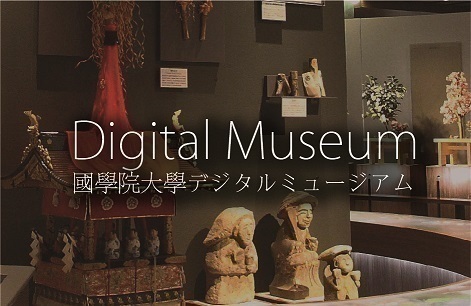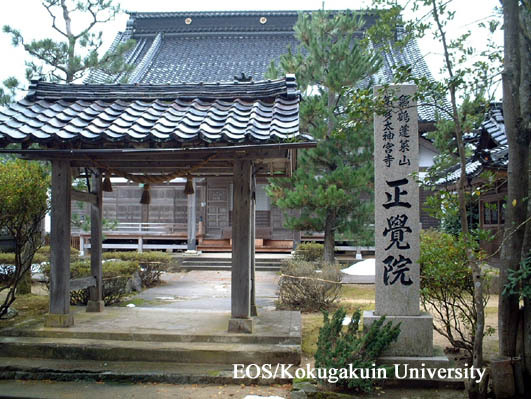- トップ
- Encyclopedia of Shinto
- Jingūji
Encyclopedia of Shinto
| Main Menu: | |
| Links: |
詳細表示 (Complete Article)
| カテゴリー1: | 3. Institutions and Administrative Practices |
|---|---|
| カテゴリー2: | Ancient |
| Title | Jingūji |
| Text | Jingūji (shrine temples), also called jinganji or jingoji, were Buddhist temples associated with Shinto shrines. Jingūji were built according to the notion of the "amalgamation of Shintō and Buddhism" (shinbutsu shūgō). The first recorded instance of a jingūji is found in the first volume of Nihon ryōiki (Miraculous Tales of Japan): to fulfill a vow made at the time of the Kudara (Paekche) expedition during the reign of Saimei (r. 665-661), an ancestor of the senior district chieftain (dairyō) in the Mitani District of Bingo Province (present day eastern Hiroshima Prefecture) founded a temple named Mitanidera for the sake of the deities. Also, in the vicinity of Usa Jingū, Buddhist temples such as Hokkyōji and Kokūzōji were built during Tenmu's reign (672-86, the Hakuhō era). These temples were later consolidated into Mirokuji, the jingūji of Usa Shrine. However, temples that were given the title of jingūji (jinganji) and clearly dedicated to particular shrines appeared a little later. The earliest example was Kehi Jingūji. It was founded in 715, according to Muchimaro's biography in the Tōshi kaden (The Biographies of the Fujiwara Family). It was followed by Wakasahiko Jinganji, built in the Yōrō era (717-24); and by Kashima Jingūji, which was constructed in the Tempyō-shōhō era (749-75). Thus, a number of jingūji were founded in various locales during the first half of the eighth century. In the late Nara period, during the reign of Shōtoku (764-770), the royal court designated Ōkasedera, a private temple in Ise Province, as the jingūji of the Grand Shrines of Ise. The early jingūji were constructed based on the premise that kami — who were thought to have been born as such due to karmic retribution — could be liberated from their suffering through Buddhism. Such jingūji were generally not built by the state. Instead, popular ascetics erected these temples with the assistance of shrine priests (kannushi) and local leaders. Typical examples were shrine temples in Tado and in Kashima, founded by the wondering monk Mangan. In the Heian Period a new type of institution called the miyadera emerged. A miyadera was simultaneously a jingūji and a shrine. The first miyadera was established by a monk of the temple Daianji, Gyōkyō, who "invited" (kanjō) the deity Hachiman from Usa to Iwashimizu Hachimangū (Iwashimizu Hachimangū Gokokuji). After this, other institutions such as Gionsha Kanshin'in (present-day Yasaka Jinja) and Kitano Tenmangū (Kitano Miyadera) were built. Many of the shrines for mountain worship, such as Kumano and Hakusan, took the form of miyadera. Miyadera utilized administrative models derived from Buddhist temples — they were managed by a kengyō (superintendent), chōri (superintendent, director), bettō (director), and shugyō (secretary). Such positions were held by hereditary shasō (shrine monks) who were permitted to marry. There were also shrine priests who did not take Buddhist vows and who were lower ranking than the shasō. Due to the influence of Buddhism, the enshrined deities (saijin) at miyadera were "vegetarians" — their shinsen (divine food offerings) did not include fish or fowl. In the early modern period, the term bettōji was often used for jingūji. Most of the major Shintō shrines had associated bettōji or jingūji. However, because of the policy of shinbutsu bunri (the "separation of Shintō and Buddhism") in the early Meiji era (1868-1912), many of these shrine temples were abolished and the shasō were either driven out or forced to become lay members. The few shrine temples that survive include the jingūji of the Wakasahiko Jinja and the Seigantoji of the Kumano-nachi Taisha. See also Shinto and Buddhism — Satō Masato |

Footage of Katsushika Hachimangū on whose grounds a jingūji had existed until the separation of buddhas and kami during the Meiji period. As a remnant of the pre-Meiji amalgamation of Buddhism and Shinto, a bell tower such as is normally found in Buddhist temples is located on the shrine grounds.
2007年 **月 **日
Ōsawa Kōji





